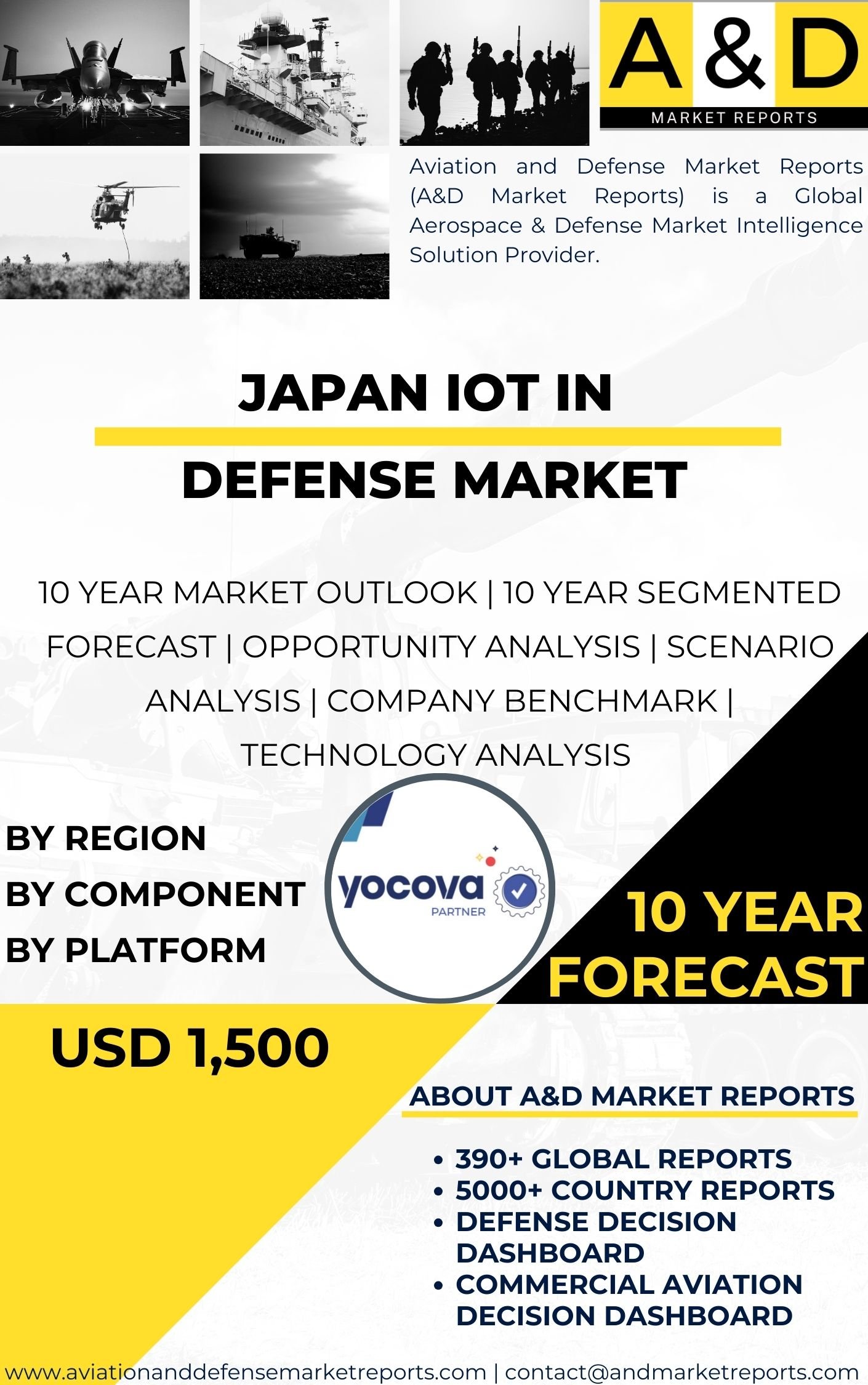Description
The Internet of Things (IoT) in the defense market in Japan has become increasingly significant in recent years due to the nation’s focus on modernizing its defense capabilities and addressing security challenges in the Indo-Pacific region. IoT refers to the interconnection of devices, sensors, and systems through the internet, enabling data exchange and automation to enhance operational efficiency and situational awareness. As Japan faces evolving global security threats and regional tensions, the demand for IoT solutions in defense has grown, leading to increased research, development, and investment in this field.
IoT technology offers numerous applications in the defense sector, providing valuable capabilities for real-time data gathering, analysis, and decision-making. By enabling seamless communication and connectivity between various defense platforms and equipment, IoT enhances the Japan Self-Defense Forces’ (JSDF) operational effectiveness and improves its ability to respond to emerging threats.
One of the primary applications of IoT in defense in Japan is in asset tracking and logistics. IoT sensors integrated into military equipment, vehicles, and supplies allow for real-time tracking and monitoring. This enhances the JSDF’s ability to manage its resources effectively, optimize logistics operations, and ensure timely deployment of personnel and equipment.
Moreover, IoT is also used for predictive maintenance of military hardware. By continuously monitoring the condition and performance of equipment, IoT sensors can detect potential issues before they escalate, enabling proactive maintenance and reducing downtime. This approach enhances the longevity and reliability of critical defense assets.
In addition to logistics and maintenance, IoT plays a significant role in enhancing situational awareness on the battlefield. Sensors and surveillance systems can be integrated into unmanned aerial vehicles (UAVs), unmanned ground vehicles (UGVs), and border security systems, providing real-time intelligence and reconnaissance data to commanders and troops. This data helps the JSDF gain a comprehensive understanding of the operational environment and respond swiftly to emerging threats.
As Japan emphasizes indigenous defense capabilities, the domestic adoption and development of IoT in defense have seen substantial growth. Collaborations between the government, defense industry, and research institutions have fostered innovation, leading to the creation of advanced IoT solutions tailored to Japan’s specific defense requirements.
Japan’s alliance with the United States has also played a significant role in the development of its IoT capabilities. Through this partnership, Japan has access to advanced technologies and expertise, contributing to the modernization of its defense forces and enhancing interoperability with allied nations.
The IoT in defense market in Japan also benefits from advancements in sensor technology, data analytics, and cybersecurity. Many features from the commercial and industrial sectors, such as miniaturized sensors and advanced data processing algorithms, have found applications in IoT solutions for defense, leading to increased efficiency and effectiveness.
However, the IoT in defense market in Japan also faces challenges related to data security, interoperability, and the integration of legacy systems. Ensuring the security and integrity of IoT data is crucial, as sensitive defense information could be vulnerable to cyber threats and attacks.
Moreover, interoperability between different IoT systems and platforms is essential to enable seamless data sharing and analysis across the JSDF’s various branches and with allied forces.
Addressing these challenges is crucial for further enhancing Japan’s defense capabilities and ensuring its ability to maintain a reliable and high-performance defense force, contributing to the modernization and effectiveness of the Japan Self-Defense Forces.
In conclusion, the IoT in defense market in Japan has witnessed significant growth and strategic importance, driven by the nation’s focus on modernizing its defense capabilities and addressing security challenges in the Indo-Pacific region. IoT provides critical capabilities for asset tracking, predictive maintenance, and situational awareness, making it integral to the Japan Self-Defense Forces (JSDF). The collaboration between the government, defense industry, and research institutions, as well as international partnerships with allied nations, fosters innovation and contributes to the growth of the domestic IoT in defense market. Addressing challenges related to data security, interoperability, and integration is crucial for further enhancing Japan’s defense capabilities and ensuring its ability to maintain a reliable and high-performance defense force, contributing to the modernization and effectiveness of the Japan Self-Defense Forces. With its strategic focus on enhancing indigenous defense capabilities, Japan remains committed to leveraging advanced IoT technologies to enhance its defense capabilities and contribute to regional and global security.




